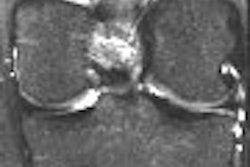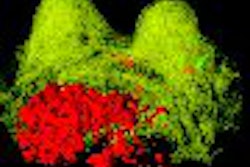We recently received a call from a university that was terribly proud of its brand new MRI and wanted to coax us into writing a feature about the installation. Unfortunately, mere installation of the number 10,000-and-something MR unit isn't a very captivating story. MRI equipment is now an expected part of conventional clinical care.
So how is it that equipment that is almost ubiquitous in U.S. healthcare and yet is still loudly trumpeted by public relations people as "new" can be almost completely invisible during Joint Commission surveys?
For the entire brief history of clinical MRI, Joint Commission member imaging facilities have been subject to surveys and investigations. What have these surveys historically reviewed in the MRI suite? Often the surveyor is looking at two aspects of safety and delivery of care: operations and physical safety.
For operations reviews, it's just the luck of the draw and depends largely on the randomness of whether or not a Joint Commission inspector shadows a patient who comes to MR. If he or she does, you can expect to be asked multiple questions about the Joint Commission's current hot-button issues:
- Are there physician orders for each contrast administration?
- Has a medication reconciliation been completed for the patient?
- Are all drawn and dosed medicines appropriately labeled?
- Has the pharmacy prepared and prescribed dilutions for packaged contrast media?
For the most part, reports of recent surveys in the MR suite don't indicate any Joint Commission interest in physical or clinical screenings (including screening for renal function contraindications for gadolinium-based contrast agents). Occasionally, there may be a question about code readiness, but not frequently.
From the physical safety standpoint, only one issue receives regular surveyor attention: that is the nonmagnetic fire extinguisher. There are no questions about the magnetic properties of the 10,000 other items in, and around, the MRI suite, or whether patient monitoring or treatment devices are approved for use in the magnet room. No check of provisions in support of interventional applications. There are no questions about staff safety training or device screening. The Joint Commission just wants to know about the fire extinguisher.
When you consider the extreme detail into which Joint Commission surveys penetrate in other areas of care, many contend that MRI has largely been given a "free ride."
It's likely that years of casual surveys of MRI facilities are coming to an end. The Joint Commission has received reports of accidents at accredited facilities that are raising concerns about how effectively MRI safety procedures are being implemented. When combined with recent reports from both Canadian and U.K. health authorities on the wide variation in the implementation of MRI safety principles, and the near doubling of MRI accidents reported to the U.S. Food and Drug Administration for the 12-month period ending mid-2006, it's not surprising that the Joint Commission would be taking a much closer look at the safety of patients and staff in the MRI suites of accredited facilities.
So what will be the hot button issues of the future? Reports of a forthcoming Sentinel Event Alert on MR safety, as well as recent article published in the Joint Commission's "Perspectives on Patient Safety" newsletter may give us a good idea.
In our next installment, we'll identify these MRI safety issues that are likely to garner the attention of the Joint Commission surveys. We'll also provide a preparatory checklist for MRI facilities to help make certain that crucial safety issues in the MRI suite have been appropriately addressed.
By Robert Junk and Tobias Gilk
AuntMinnie.com contributing writers
August 29, 2007
Reprinted from www.mri-planning.com by permission of the authors. If you would like more information on any aspect of MR facility design or safety, please contact Robert Junk or Tobias Gilk at MRI-Planning.com.
Related Reading
Total process management for efficient MRI suites, August 8, 2007
What does your MRI vendor know about your quench vent that you don't? July 3, 2007
Stand around and wait -- stat! What's your imaging suite emergency procedure? June 11, 2007
MR guidelines: Elevating standards of practice and care, May 10, 2007
MR suite level designations: Don't let complex procedures overwhelm your facility, March 27, 2007
Copyright © 2007 MRI-Planning



.fFmgij6Hin.png?auto=compress%2Cformat&fit=crop&h=100&q=70&w=100)




.fFmgij6Hin.png?auto=compress%2Cformat&fit=crop&h=167&q=70&w=250)











